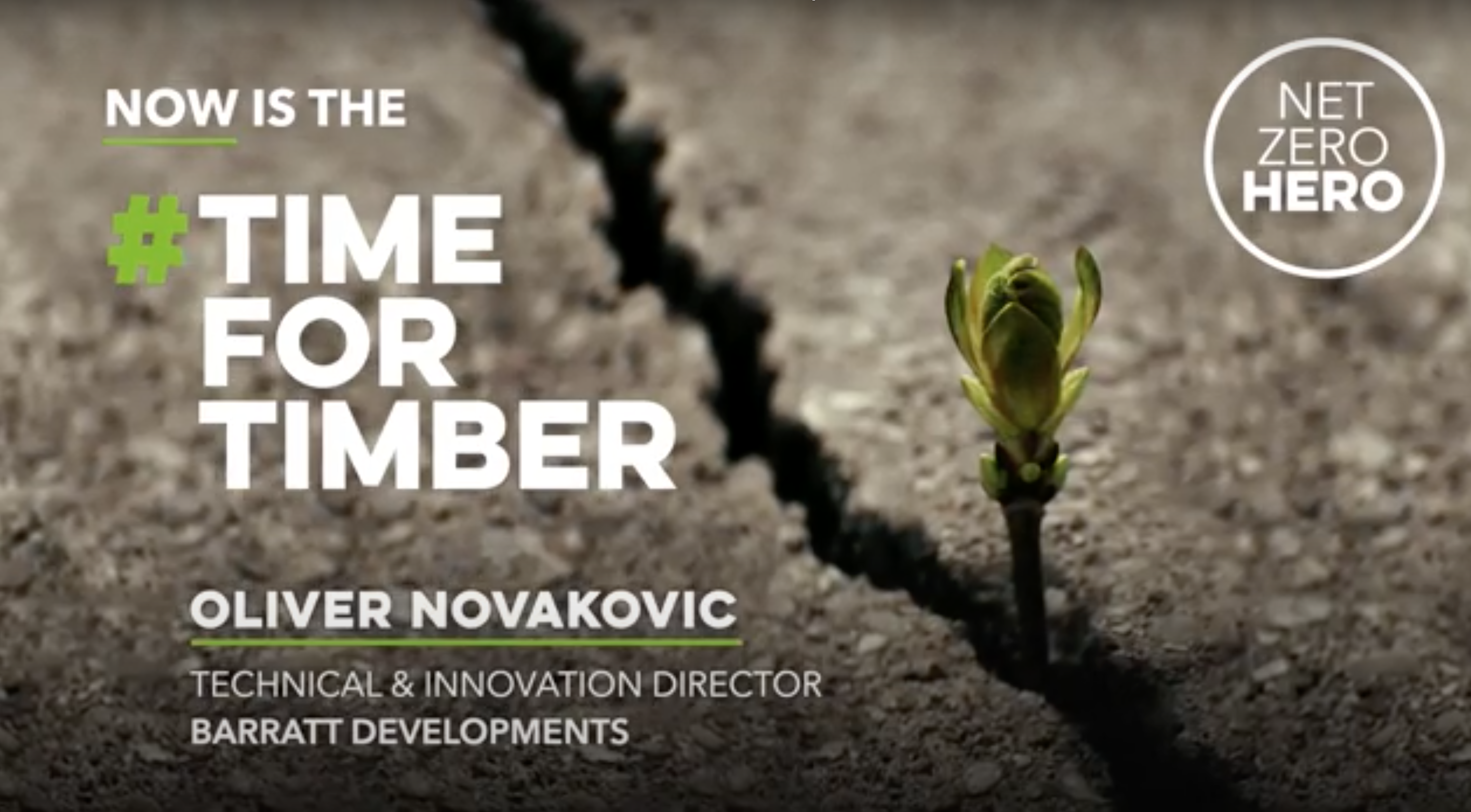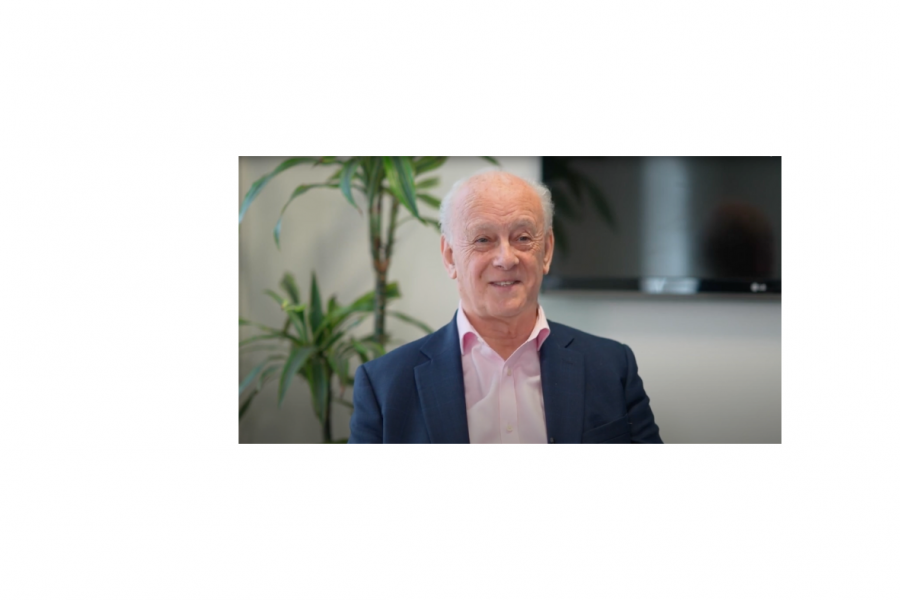Oliver Novakovic is the technical and innovation director at Barratt Developments, one of the UK’s largest housebuilders.
Recipient of the Next Generation Sustainability Index ‘Most Sustainable National Housebuilder’ for 5 years running, the company recently showed its commitment to the sector by purchasing Oregon Timber Frame, itself, one of the UK’s largest timber frame manufacturers with a turnover of £20 million.
Here is his thinking as to why now is the time for timber.
Is the UK construction industry ready for climate change and carbon reduction?
I think the industry is ready to take up the challenge of in-use carbon, specifically within the home. The reason is that the technologies are available – getting the thermal efficiency of our homes lower – whether it’s through photovoltaics or air-source heat pumps. We have been using them, not in the volumes that we need and that’s probably where the challenges come from. We have the technology, but the key issue is in delivering it. Currently we don’t have the capacity both in the skills available to install, or in the capacity to manufacture the volume that we need. I think the other one is skilled professionals being able to apply the M&E and how everything works. A further one is the capacity, with photovoltaics, or heat-pumps, we’re going to suddenly ramp up how many we need. We are talking about major companies, such as Mitsubishi and Daikin, so I think they can do it, but they will have to set out a road map. Together, given the right time frame and, hopefully a road map from government towards net zero for homes, I think we can do it, but I think there are some key challenges within that journey.
I don’t think we know enough about embodied energy. I was in a meeting where we were talking about the embodied energy of different technology types – timber steel and concrete. One of the key points that was made is that we don’t have the right information to be able to do those calculations, we don’t have the right framework, so I think embodied energy needs a lot more work to it.
Can you tell us about Barratt’s plans for new homes to be carbon neutral by 2030?
The government has published the Future Homes standard, so they’ve already set some milestones and we, as a business, have supported that and by 2030 will be looking to be zero carbon with our new homes. To do that, as a major business, we know the challenge that comes with delivering that successfully. The key for us is that we are pulling together a road map. We’ve already built a zero carbon site at Hanham Hall and we’ve built a zero carbon home ‘The Greenhouse’ at the BRE, so we’ve got some good experiences of how you meet the challenges of delivering zero carbon. But we’re still talking about delivering anywhere between 12-18,000 net zero homes in the future. We are pulling a road map together that sets out all the key areas to consider; all the trials and pilots we will have to do, taking account, most importantly, of our customer. This needs to work for them – we will develop the solution, we will take our time and we’ll get it right, because if our customer doesn’t like it in the end, then there’s no point to it. In our preparation we’re developing a road map which we are discussing with some of our supply chain, to understand their road maps. The importance of this is, it tells them our intent and it allows them to come in with us, because this is an industry-wide challenge and we need all of our partners and our supply chain to look into it and help us on that journey.
How will you be supporting your supply chain to achieve this?
What we’ve done initially is to have conversations with some of the key stakeholders within the net zero carbon sector and we’ve taken on board their points and their key themes. I think that what is critical is that the journey to zero carbon means different things to different companies and that our challenges are very different, but actually they all integrate together to deliver the final solution. As housebuilders and developers we’re at the end of that, so it’s important that they do all come together for us to deliver our product, a home to a customer; but we do also have to recognise that they will have challenges that we won’t understand because we’re not in their industry. We’ve already started to have those conversations to try and help us better understand their challenges and their issues to, hopefully, help. It’s very early days because the government needs to give us clarity and what we’ve currently said is, as we go towards net zero in 2030, what are the key things that are stopping you? Is it materials? Is it skills? If it is, what would you need from us to help? If you can define a clear roadmap and how you are going to get there, we will come and align with you. So, if the government sets a clear road map and we are setting one too, then the supply chain can get behind it and can start making investments.
What is the strategy for using structural timber going forward?
The most important thing is that we’ve purchased a timber frame company. Our strategy is pretty clear. For five years we’ve been developing our timber frame approach and, as with zero carbon, we’ve done it robustly. We set a road map – it’s about training, it’s about skills, it’s about bringing everybody on board. It’s been a successful five years, because at the end of it we have purchased a timber frame company, Oregon and now we’re looking at how we deliver more timber frame. Our use of MMC is growing and, of all those MMC’s, timber frame is the dominant one, so our strategy is to keep using more of it, in the correct robust way. The reality of it is that we need a number of options and we need more homes, therefore we will rely on all the technologies. But there’s no doubt, that under MMC, timber frame has got a long history in this industry, which gives people confidence and it’s the system that we are using most of.
Can the timber frame industry take advantage of the COVID 19 pandemic?
There’s a quick win and then there’s the long-term solution. To start with the quick win, we’ve got a bow wave of people wanting houses. The reports I read are saying, we can’t make enough homes to sell. With timber frame, we know we can deliver homes quicker than other approaches, therefore in the short term it is a good opportunity for the timber frame institutions to show the true benefit they have; an opportunity to say this is the technology we can use and we can deliver timber frame houses on our site. In the long term, relevant to how the market goes, we will either need more houses, so we stick with that short-term approach, or, more importantly, we may have a bigger dip of skills where we will need to think differently and more holistically. I think timber frame brings that capacity to bring a different type of skillset into the marketplace and, more importantly, release the pressure on some of the other skills that you need. I think timber frame has an opportunity to highlight the benefits it brings and get housebuilders on board, both in the short and long term.
What are the key challenges the timber frame industry face right now?
We’ve talked about net zero carbon, but we’ve got to remember that there’s a whole raft of other things coming. We’ve got the whole approach of the electric vehicle, electric only homes, net biodiversity – there’s a lot of different carbon and electric based challenges coming. Whilst they might not directly affect the timber frame industry, they will
affect their customers and they will have to change the way they do things – we’re going to start putting batteries in homes and have electric vehicles coming into homes – how will that change the process? Legislation is also substantially changing. We’re all talking about energy efficiency. Let’s not forget how much Part B has changed fire. Massive changes around that area, air tightness, air quality, acoustics – the challenge for industry now is that regulation is constantly changing. The way we build homes is going to change and the complexity around the technical requirements of building those homes is going to get greater and, at the end of the day, we have to do all that and still deliver more homes.




